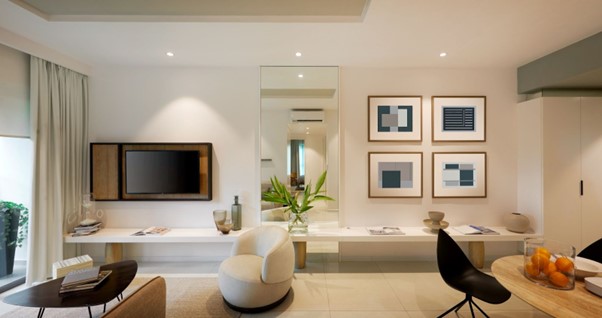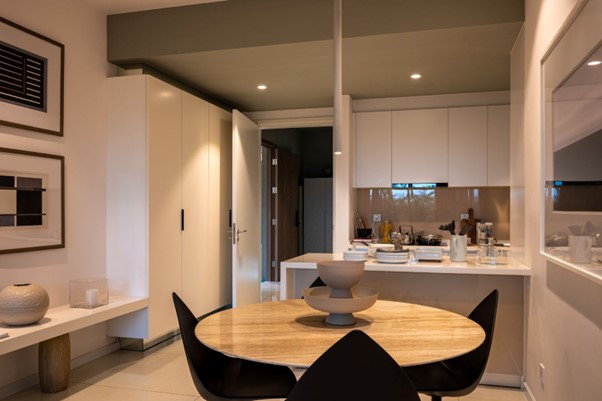Moving into a new apartment is both exciting and stressful, particularly if it’s your first time. Aside from actually finding your dream home, there’s a lot of documentation to organise, not to mention the logistics of the move itself.
To help you out, we’ve created this guide to renting an apartment in Australia, which covers everything from online searches to viewings and the legalities of your tenancy agreement.
Search for your new home
Renting an apartment in Australia begins with searching for your new home and the best place to start is online. Rental comparison websites such as Rentola Australia offer a comprehensive look at what is on the market within your preferred neighbourhood and budget. They also allow you to filter the results based on your ideal type of accommodation (apartment, house or villa) and how many bedrooms you need.
In addition to listing entire properties for rent, some sites also list individual rooms in shared houses. This is a great option if you’re moving to a new city and want to easily make friends or just want to keep your rental costs down.
After browsing the listing photos and description, you can get in touch with the landlord directly and ask them any additional questions you may have. This is a great opportunity to check whether pets are permitted and discuss the terms of the tenancy agreement.
Furnished vs unfurnished apartments
If you’re moving from abroad or haven’t yet accumulated your own furnishings, then renting a fully furnished apartment might be a convenient option. It may cost you a little more, but you’ll save money by buying your own furnishings and moving them from your existing residence.
When looking for a furnished apartment, make sure it has all of the necessities – a bed, a sofa and a dining table – as well as any extras (such as a washing machine and/or dryer) that you aren’t ready to invest in yourself.
 Image by Point3D Commercial Imaging Ltd., via Unsplash.com
Image by Point3D Commercial Imaging Ltd., via Unsplash.com
View the apartment
Unless you’re arriving from interstate or abroad and can’t physically view the property, it’s highly recommended that you attend an in-person inspection. It’s the only way you can be 100% sure that the property is right for you and that it lives up to expectations. Aside from allowing you to check for any signs of damage, an open home is also a great way to get a “feel” for the space and if it’s somewhere you can imagine yourself living long-term.

Image by Huy Nguyen, via Unsplash.com
Get your documentation together
Before you even start looking for an apartment, it’s a good idea to make sure your documentation is in order so that you are ready to apply when your dream property becomes available. In Australia, you’ll need to provide official photo identification, such as a driver’s license or passport, as well as evidence that you can afford to pay the rent. This might be recent payslips from your employer or a bank statement showing regular deposits.
Some landlords may also require that you show proof of employment and references from previous landlords. If you have never rented before, they may accept character references from former teachers or employers.
Providing a credit check is another way that landlords screen candidates for their reliability. As a credit check can take some time to secure, it’s best that you apply for it in advance.

Image by Huy Nguyen, via Unsplash.com
Understand your tenancy agreement
If your rental application is successful, you’ll be asked to sign a tenancy agreement outlining your legal obligations. Rather than just breezing through the paperwork and signing on the dotted line, take the time to read the fine print so you know what you are getting yourself into.
The tenancy agreement should detail the security deposit (bond) that is required before you can move in and what you need to do to ensure it is returned at the end of the tenancy. In most cases, the bond is lodged with a state authority (not directly with the landlord) and you will be issued with a receipt as proof.
The tenancy agreement will also explain the amount of rent you have to pay in advance, which will differ depending on your rental situation and the Australian state you will be living in.

Image by Sidekix Media, via Unsplash.com
Know your rights
Want to break your lease early or concerned about a rent increase? Knowing your rights as a tenant is important in ensuring that both you and your landlord act within the law. But with tenancy laws differing from state to state, it can be confusing knowing exactly where you stand.
Some states only allow rental increases every 6 or 12 months while in others, there are no limits to how frequently the prices can go up. If you’re not sure, check with the tenants union in your state or territory as they have your best interests at heart.


